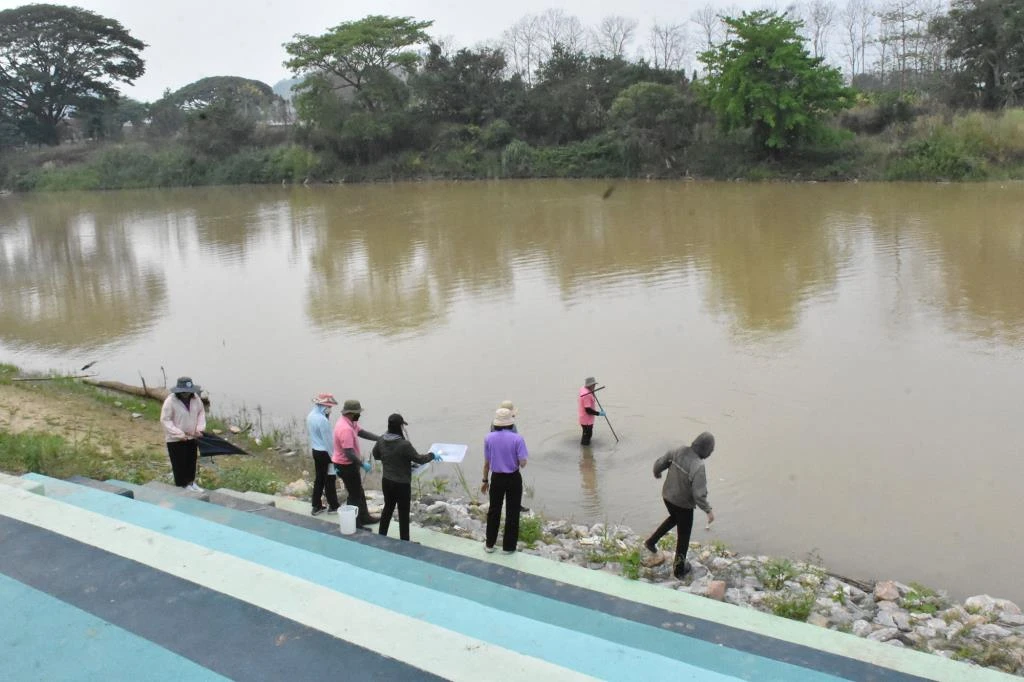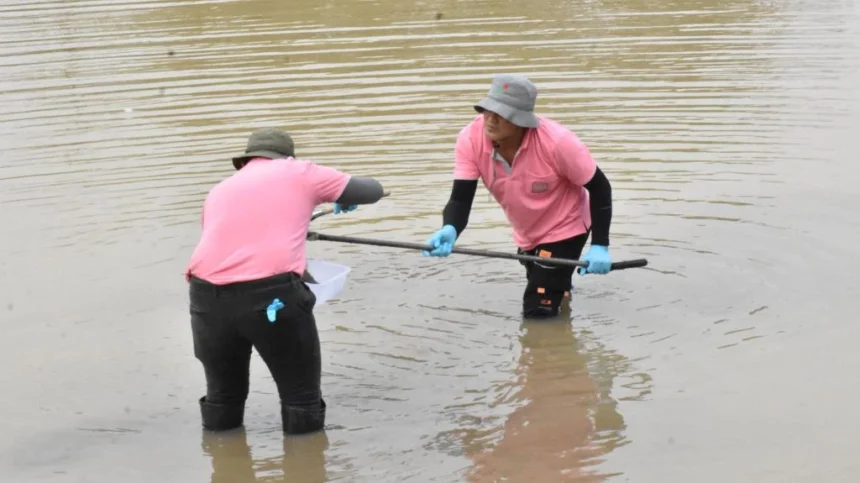Chiang Rai – The Pollution Control Department in Chiang Rai has collected sediment samples from the Kok River for further analysis, focusing on potential contamination by heavy metals and cyanide.
This comes after initial water tests showed no contamination, but concerns remain about possible pollutants from Chinese-invested gold mining activities in Shan State and Mong Yaw, just 36 kilometres from the Mae Ai district border.
The contamination could impact local water supplies.
On April 2, Ms. Piyanuch Suangkum, Director of the Water, Air, and Noise Quality Management Division at the Pollution Control Department’s local office, led a team to collect sediment samples from the Kok River.
The new tests come after water samples from the Kok, which flows from Shan State in Myanmar through Mae Ai in Chiang Mai and into Chiang Rai before reaching the Mekong River, were tested due to public concerns over unusually murky water conditions.
Ms. Piyanuch explained that the river’s unusual state had been noticeable since late March. Although water testing showed no signs of heavy metals or cyanide, sediment testing is necessary for a more thorough analysis.

Kok River Sediment Gathered
Sediment can indicate contamination levels and is also a critical part of the aquatic ecosystem, affecting both wildlife and human food chains. Samples were gathered from six locations—three in Chiang Rai and three in Tha Ton, Mae Ai District of Chiang Mai.
In Chiang Rai, sediment samples were taken from Ban Pong Na Kham in the city, where locals worry about residue affecting the water used for village water supplies. Two additional samples were collected within Chiang Rai city, close to a regional water treatment plant.
“Sediment testing offers more precise results for detecting heavy metals and cyanide compared to water testing. It typically takes about two weeks to complete the analysis,” Ms. Piyanuch said.
Earlier reports confirmed that water samples taken in Mae Ai showed no hazardous levels of heavy metals or cyanide. However, murky water was visibly present in the area, diminishing in appearance downstream near Chiang Rai.
Concerns from both local residents and the department stem from increased sedimentation seen in Mae Ai’s portion of the river during March.
Residents with family ties to Mong Yaw and surrounding areas in Myanmar reported that over 23 Chinese mining companies, including gold mining operations, have been active near Ban Hung, approximately 36 kilometres from the Thai border. Locals fear that chemical runoff from these operations could enter the Kok River.
Related News:
Health Concerns Raised Over the Kok River Due to Mining in Myanmar

Anna Wong serves as the editor of the Chiang Rai Times, bringing precision and clarity to the publication. Her leadership ensures that the news reaches readers with accuracy and insight. With a keen eye for detail,













